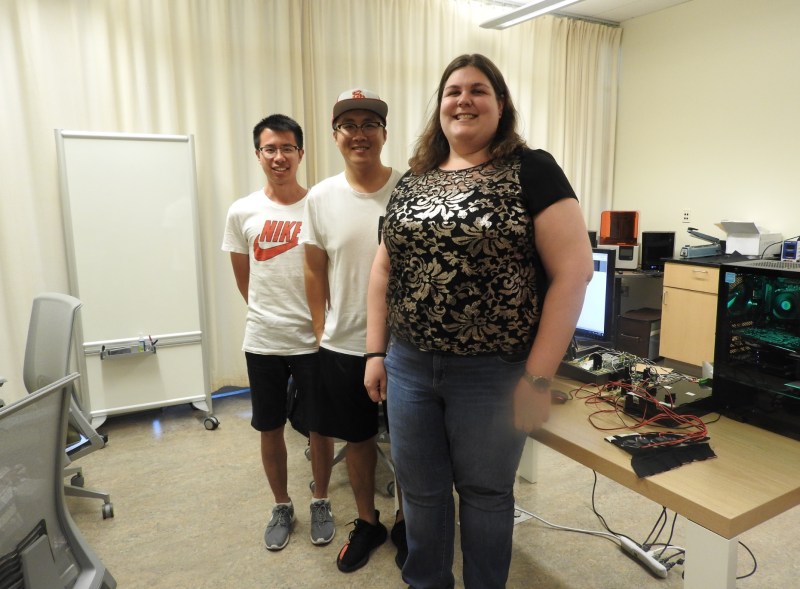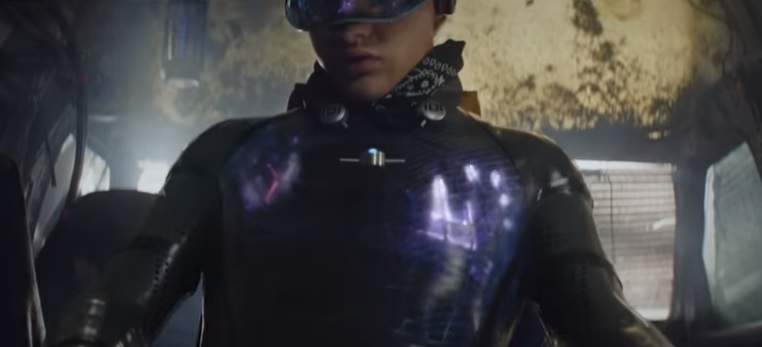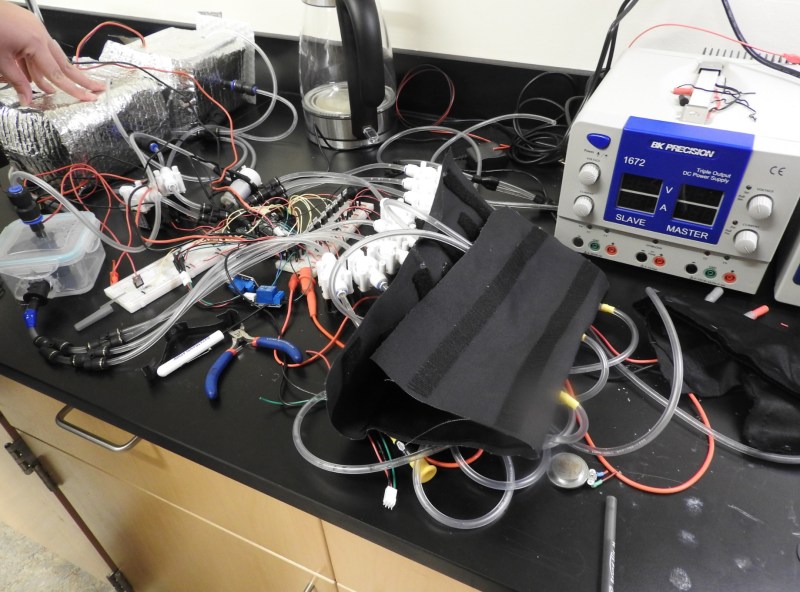VentureBeat: The number of buttons, the number of actuators, is that one thing that will determine how much you can control the feeling?
Culbertson: Sure. If we had 200 actuators and they were smaller, we could definitely create an entire sleeve of this to provide multidirectional cues. We’re building a 2D system, so instead of having a single row, it has two rows. We could provide different sensations in addition to stroke. We could do a grasp or additional gestures.
We just bought off-the-shelf components for the actuators, because we’re computer scientists, but if we worked with mechanical engineers and materials scientists to design and miniaturize the actuators, we could pack these a lot tighter and make them a lot stronger. We could build an armband, a vest. I’m sure you can tell that the normal force is a lot more natural than what you get from vibration. It’s a lot more pleasant.
VentureBeat: Why haven’t some of the different haptics companies thought of this earlier? The haptics devices I’ve tried so far have mostly been these buzzing things. Nobody’s really ventured into this territory yet?

Above: Heather Culbertson and her grad students in the haptics lab.
Culbertson: Not with normal, no. Most commercial devices have typically used the buzzing. One startup I know, Tactical Haptics, is using skin stretch, which came out of the university lab as well.
VentureBeat: That’s the Utah one, right?
Culbertson: Right, Utah, Will Provancher. A lot has to do with availability of actuators and miniaturizing the actuators. These are a bit big right now, but it’s not that heavy. It’s looking at what you can do with the actuators. These are actually speakers, as I said. They’re not designed for haptics at all. They’re just exciter speakers, speakers without cones.
VentureBeat: I remember one company more recently was using speakers to blow air at you, to make you feel something without having something attached to you. It’s limited, but it’s something different.
Culbertson: There’s a lot more going on in haptics research than what you typically see in commercially available haptics. What’s really novel about this device is the use of a haptic illusion, how we can create the sensation of long lateral motion without a very mechanically complex device. We’re going to continue exploring that to see how we can change the signals, how we can play around with novel control of the devices, to create the illusion that something is moving along your arm, something is happening when it actually isn’t.
VentureBeat: Do you eventually want to get to those Ready Player One suits?
Culbertson: Yeah, that’s definitely the dream, the goal of all haptics. [laughs] It comes down to how much is needed to be really immersive, how much of the body needs to be covered. Do you need the full body? Are the hands enough, or the arms? Do you need arms and a vest? Now that we’re getting into more wearable devices, rather than grounded, table-based haptic devices, these are questions we can start to answer.

Above: A haptic suit enables Wade to feel touch in the Ready Player One trailer.
VentureBeat: How long a process do you think you have ahead of you, to get something like a product defined? Do you still see a lot of years of research?
Culbertson: We’re pretty close in terms of ideas for how we could integrate this with currently available games or movies, entertainment. In order to get this into a commercially viable system, I think we’d have to partner with more mechanical engineers or materials scientists to miniaturize the actuators, rather than going with what we have available off the shelf.
VentureBeat: Something like gloves, are they the first step? Would that be useful by itself?
Culbertson: Gloves are really challenging because your hands are so sensitive. Fooling your hands is a challenging problem. You have miniaturization problem with getting the actuators in a glove, and then if you want to display something to your hand that delivers as many signals as your hand is capable of sensing—you have a lot more receptors in your hand than you do in your arm. If you’re working in a VR scenario, you aren’t getting a lot of signals in your arm and other parts of your body, so that’s where we’re starting, more in armbands or vests.
I can show you our other two devices. They’re not quite demo-able, but we have the hardware. None of this is proprietary, by the way, nothing that we’re showing. This is a project I had an undergrad working on this summer. He was a physics undergrad from MIT, on an exchange program. It’s a thermal haptic display. We were trying to display cool and hot, very different temperatures, in addition to pressure. We have a bunch of different pumps. This was in an armband device. He would have these different actuators or pouches in here, and we would use these pumps to pump water from a hot reservoir tank and a cool reservoir tank. We’d be able to directly change the temperature of what you were feeling on the arm with the water we were sending.
What are typically used in thermal displays for haptics are these Peltier pumps. They’re these little ceramic squares controlled with voltage. You send the voltage and one side gets hot while the other gets cold. But they’re pretty slow to actuate. By using liquid, we can instantly change the temperature from hot to cold, depending on which reservoir we send from. We can also mix it to get arbitrarily warm temperatures. In addition, using the liquid gives us pressure as well. We have a couple of immersion pumps in here, and these are solenoid valves that control which pouch the water is going to, whether it’s hot or cold.

Above: This contraption lets you feel sensations of hot or cold.
VentureBeat: What would you use this for?
Culbertson: Part of it is, if you want a more immersive scenario in VR—say you’re walking through a forest, and then all of a sudden you come out of the forest and it’s hotter in the sunshine. You get warm all of a sudden. Or you could reach out toward a virtual stove and it feels instantly hot.
We’re also thinking about therapy devices. There’s a thing called deep pressure therapy, where they have weighted vests or swaddling clothes for people with anxiety. We’re working on a grant around whether we can use these types of devices to help those individuals. We want to look at whether temperature can affect that as well, whether receiving warm pressure cues is better than cold pressure cues. You could more closely mimic the feeling of a hug with warm rather than cool. We want to look at therapeutic systems as well as VR systems.
This last one we have over here, we’re working with air. We’re trying to create a more lightweight version of these wearable systems using pneumatic pouches. We have a compressed air system here, and we can pump air directly into the pouches. That we can provide pressure cues to the arm. This one’s more in the beginning stages of the project, but I wanted to give you an idea of the range of things we’re working on in the lab.
VentureBeat: It gives you a lot more appreciation for what the human body can sense.
Culbertson: The sense of touch is really, really complex. We have a lot of things going on, a lot of sensations you need to mimic when you want to build something that feels immersive and natural.

